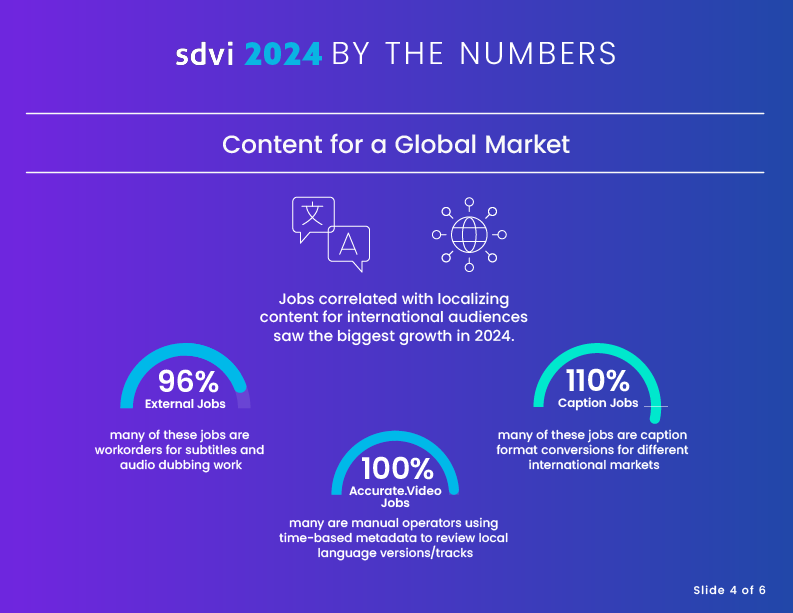
The broadcast industry often thinks of resiliency as being a matter of staying on air continuously — the golden 99.999% uptime — and for on-air operations, it’s critical. But uptime is also vital in the file-based world too. Across the media supply chain that prepares content for distribution, your ability to get content from point A to point B quickly and reliably can make or break delivery on a deal.
Your supply chain feeds your commercial output, and if you can’t make and ship that product, you can’t complete the transaction and bring in those revenues. Like the on-air chain, the media supply chain is not a best-effort workflow with almost-always available infrastructure. Rather, it is a strategic asset for the company. As an enabler of getting the job done, your media supply chain must be reliable, available, and it must be scalable. That’s why resiliency matters.
At the highest level, resiliency translates to the ability to remain productive in spite of a failure somewhere in the system. Even if some element of your media “factory” — the media supply chain — out of your control breaks down, or the power goes off, you are still able to move content through it. Having the means to keep key workflows moving; that’s resiliency.
If you have a single point of failure and the system becomes unavailable, you have teams of operators who cannot get their jobs done until the problem is resolved. Operators are typically the most expensive part of the operation, and you want to keep them working. With a resilient media supply chain, you can.
Building Resiliency: From On-Prem to the Cloud
Before using the cloud for media workloads, ensuring resiliency meant building two of everything in two different facilities. Right out of the gates, you took an efficiency hit on utilization; you were at 50% before you even got going. Looking at that model now, one could argue that maintaining redundant infrastructure in an on-premises model to achieve resiliency is just additional overhead, additional cost, whereas resilience in the cloud creates value.
In the cloud, you pay for resiliency only as you require it — if and when there is a failure. You only turn on that alternate path when you need it. Because you can failover almost instantly, there is no need to keep that second path up and running all the time. The resiliency is there when you need it. Rather than pay double for infrastructure, you just pay for the cloud resources you need to achieve 100% availability.
The flexibility of scaling services in the cloud gives the media supply chain greater resiliency and reliability — and greater efficiency — than the broadcast industry has ever been able to achieve with on-premises infrastructure. With its potential for geodiversity, as well, the cloud enables models where infrastructure can run across multiple locations with automatic failover in the unlikely event that one datacenter goes offline. In cloud terminology, these locations are called “Availability Zones” (AZ) and good cloud software architecture takes advantage of the natural redundancy enabled by using multiple AZs in a Region.
A multi-availability zone approach offers a higher degree of resiliency and scalability, with supply chain jobs automatically allocated across zones not only for load balancing but also to keep processing moving in the event that either zone goes offline. Even with a model set up to use just a single availability zone, which is always the most affordable option, a good management platform will ensure that any jobs not completed during an offline period are executed when availability returns on as many instances as needed to catch up.
Choosing Your Resiliency Model
You can build a more resilient media supply chain in several ways, and some better than others. You can build completely redundant physical infrastructure at dual sites and pay to maintain a disaster recovery system you may never need. You can build a partial on-the-ground backup infrastructure and take your chances that it will cover your needs in the event of an outage or other problem, allowing you to keep running. Or you can build a media supply chain in the cloud, tapping into and paying for all the resiliency you need but only when you need it.
Only this last option gives you the benefit of continuous productivity and cost-effective operations, a combination that can have a meaningful impact on your bottom line. You won’t duplicate your investment unnecessarily, but you will keep your team working. You solve two of the central problems in the most optimal way.
The SDVI Rally platform offers near-infinite cloud scalability for media supply chain operations, which also extends to business continuity using a cloud-native architecture. Because Rally is a cloud-native media supply chain platform, it can readily leverage the right cloud services to provide cost-effective options for supply chain resiliency and security.
Reach out to us to learn more about how we can you maximize the resiliency of your media supply chain and make your entire operation more efficient in moving to the cloud. For more information on exactly how the Rally system is designed to provide resiliency, check out the free white paper: Resilient Infrastructure for Media Operations.


